Osmosis in the board bag: Blisters on the windsurf board - where do they come from, what can you do about them?
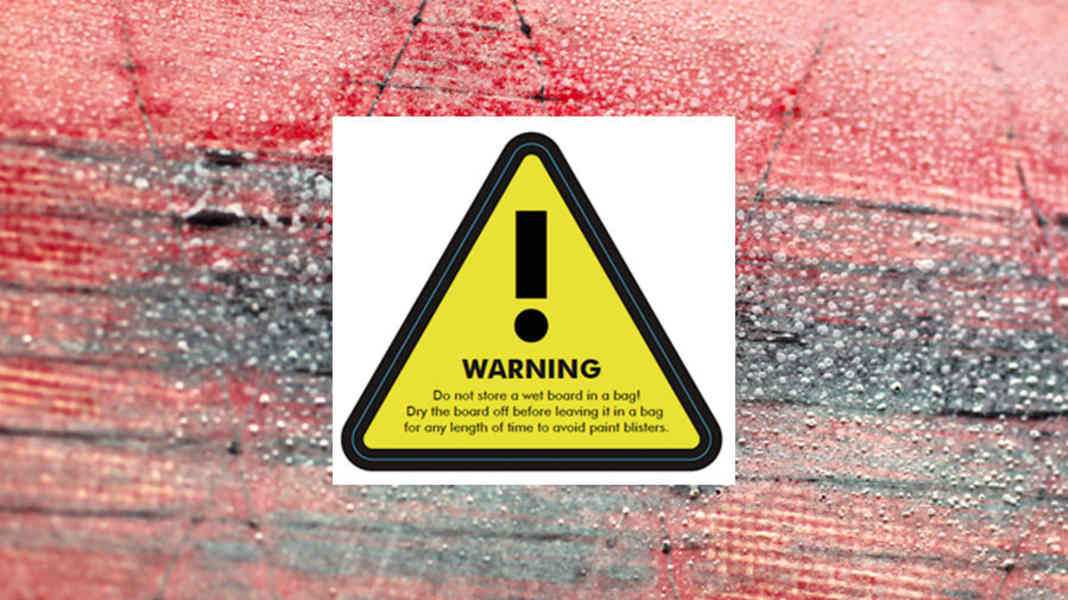
In this article:
When it comes to warranty claims, manufacturers from all sectors are usually not at a loss for adventurous explanations. The distributors are happy to repeat the windiest claims of their manufacturer. This is not very pleasant for the customer in disputes over warranty claims in the event of sudden blisters or pocks on the board.
surf first addressed the problem in 2014 after reports of damaged boards became more frequent. For many years now, some boards have been clearly labelled with a warning against packing wet boards. Since then, many surfers have become more sensitive when storing their boards, but the problem has still not really been solved. Even today, we still receive enquiries about how blisters develop and what to do about them.
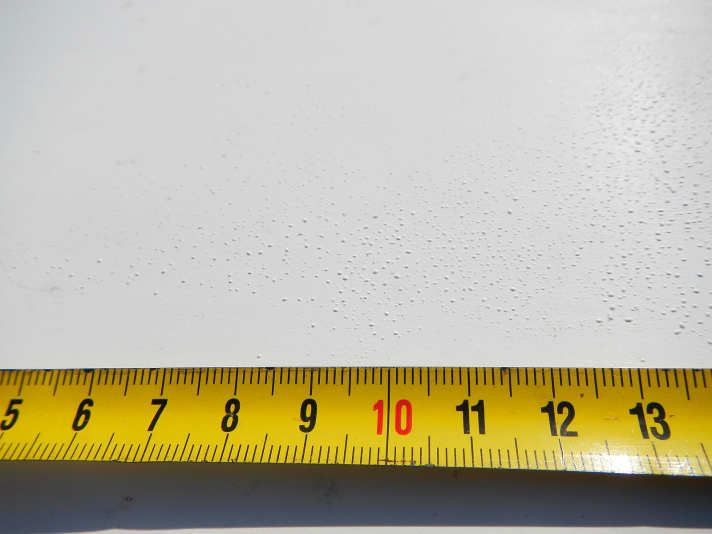
Fortunately, the cases are now quite rare, but there have been real waves of smallpox in the past, as an industry insider knows: "In the past, when we were still importing **** boards, this used to happen really regularly. The polyester board bags that we mostly used back then were to blame, the board manufacturer explained to us"he tells us somewhat bashfully, knowing full well that although the explanation is desirable for the manufacturer, it is equally implausible. It is understandable that the board manufacturer is happy to pass the buck. In addition to pure self-protection, however, such explanations are also partly the result of a lack of expertise as to what the bubbles could actually be.
Only moderately fit in specialised knowledge
"Air bubbles that expand", "chemical reactions with the board bag". As imprecise as the knowledge of the exact chemical processes is, the manufacturers' advice on what to do if, for example, it rains through on a car journey lasting several days and, in extreme cases, the board is then baked in the basement of a car ferry sounds just as clumsy. "It's enough to open the bag slightly so that air can circulate" - that's difficult with a tower of four on the car roof.
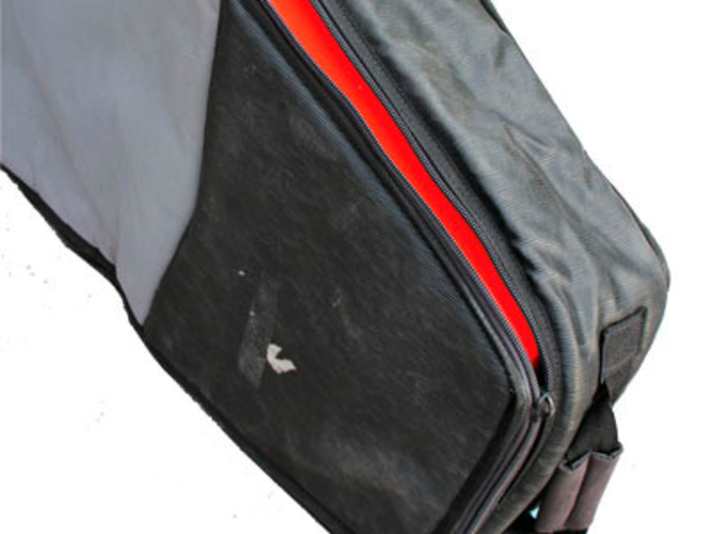
Three days can be too long
Two or three days in the wet biotope on the car roof may be enough - so if you want to be on the safe side, the boards should be aired at home or at the spot as soon as possible after riding in the rain.
Boards that are not allowed to be packed wet - this is a less than satisfactory situation. Most manufacturers then state "no warranty". However, it is clear that blisters on windsurf boards can only occur when they are stored in damp conditions and that you can therefore prevent them yourself. At least until the manufacturer finds solutions that fundamentally prevent the formation of blisters, be it through better paints or new production processes.
There is a demand for boardbags that are either completely airtight for car transport, or those that can be sufficiently ventilated with fresh air during long journeys and storage by means of suitable ventilation openings even when the zip is closed, can dry out and do not turn into a steam sauna. The supplier King from the Czech Republic has bags with special ventilation in its programme, which we will soon be presenting in more detail here and in the magazine!
What happens in the laminate
Osmosis is not the damage, but the cause of the problem. Water vapour wants to combine with chemical residues in small cavities in the laminate or under the paint. The driving force is the same that enables plants to supply the most remote leaves with water from the soil. Under extreme conditions, water vapour can diffuse through permeable lacquers and laminates during boarding and is literally sucked into existing cavities until the space becomes too tight, bubbles form and eventually burst. This "opens the door" to further, faster decay. The more humid and warmer the ambient air is, the greater the driving force for the water vapour to penetrate the laminate.

What the producer says: Incorrect storage - no guarantee
Almost everything that floats and does not have a fixed mast or motor now comes from a factory: Cobra in Thailand manufactures a large proportion of the windsurf boards available on the German market. Cobra is certain that storage is the cause of the unwanted bubbles, which is why warranty claims are rejected.
An extensive test was carried out to prove this. To do this, boards from normal series production and boards that were processed under special observation were stored under different conditions and the effects compared. Bubbles only occurred when wet boards were stored in a closed bag. However, they occurred less frequently with the specially controlled boards than with the non-controlled boards. This is sufficient proof for the producer that production has no influence, which is why bubbles are no longer recognised as a production defect.
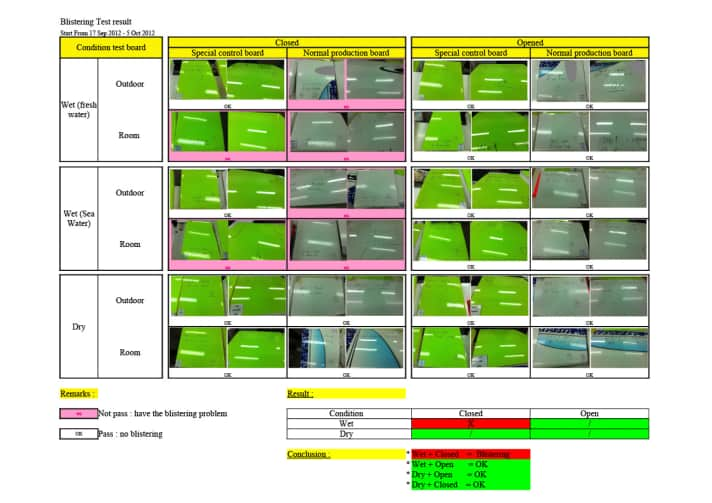
We conclude two things from this: Firstly, you have to live with this situation and not bake your boards in a boardbag greenhouse if possible. Secondly, the possibility that production could be fundamentally improved in terms of materials (resins, fillers and lacquers) and methods seems to be out of the question for a monopoly manufacturer that doesn't even let its customers see the production process.
What the workshop says: How to repair blisters on the board
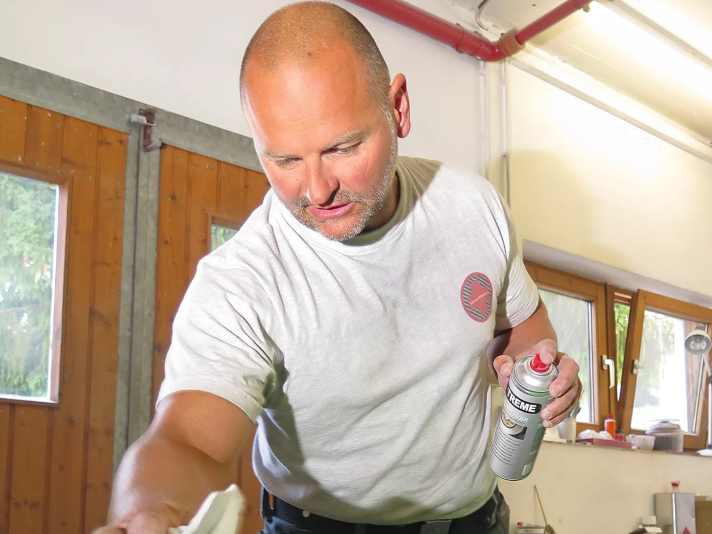
Do you know the problem with small pox on the board?
Yes, but this only occurs if the board has been stored incorrectly. But there really aren't many cases a year, maybe six or seven. It used to happen much more frequently in the boat sector. With boats, it also depends on how well the work was done.
What can you do about such damage?
If the damage is minor, it is sanded and repainted, which costs around 100 euros or more. If the damage is more extensive, it must also be filled.
What do you recommend to people?
Never transport or store boards damp in a bag for longer than necessary. It is best to invest three euros in a chamois leather and dry the board with it before packing it away. Salt water is particularly bad. The salt on the board also attracts moisture from the air, especially at the moment with our inversion weather conditions. After salt water use, you should rinse your boards with fresh water before storing them and then leave them to dry.
What the experts say about blistering on windsurf boards

What influence do the resins used have on the risk of osmosis?
There are big differences. In the past, when there were still problems with boats, which was until the beginning of the 90s, no isophthalic resin was used. After that, isophthalic resin was used, which provides the necessary diffusion resistance.
To what extent does the production method play a role?
These boards, like boats, are often laminated by hand, so it always depends on how cleanly you work and how well you ventilate the laminate. There is also a risk - if the resin is not mixed perfectly with the accelerator and other additives so that there are different concentrations - that "hot spots" will form in the laminate with higher concentrations of a chemical that is receptive to water vapour molecules. However, if the resin itself is diffusion-tight, no osmosis can occur.
However, windsurf boards are also predominantly built with epoxy resin, so they shouldn't really be affected.
One should actually assume that the structure of these resins is so dense that they are impermeable to water vapour molecules.
Then the problem probably lies in the applied layer of paint or the final gelcoat?
This cannot be ruled out. If these paints are not diffusion-resistant, so that water vapour molecules can diffuse through, osmosis damage will also occur. This creates osmotic conditions within the paint or gelcoat layer.
How should we imagine the path of the water vapour?
The prerequisite is that there are non-uniform mixtures within the lacquer layer or within the gelcoat layer or within the laminate, i.e. not a homogeneous mixture, but an excess of binders or hardeners or similar. In other words, a concentration of a liquid that is capable of reacting with water vapour molecules. In other words, components that have not been mixed 100 per cent. You have to imagine it like when you stir flour into a liquid and tiny lumps remain.
But the sticking point remains the permeable layer?
If the resin or lacquer layer is able to allow water vapour molecules to diffuse through. This can be in water as well as in a humid environment, such as in these pockets. But it can also happen if the board is stored somewhere where the humidity is particularly high. This is exactly the same. So there must be high humidity in the form of water vapour molecules and an unsaturated mixture within the resin or varnish.
How do the blisters develop?
It's the same as taking sugar and sprinkling water on it. It then soaks into these small, non-homogeneous mixtures and endeavours to equalise with its surroundings. This means that the high concentration absorbs water vapour molecules in order to achieve the same density as the surrounding air humidity. It therefore soaks up the vapour and because this small concentration is trapped in the paint or gelcoat, it slowly starts to soak up the vapour and thus forms the spots. The water vapour molecules say "Oh look, there's an unsaturated liquid - in, in, in". This leads to an increase in volume within a closed system. The moment it bursts open, osmosis stops.
What would the perfect, osmosis-proof laminate look like?
The work must be perfectly clean so that no air bubbles can form inside the mats during construction. If microscopically small bubbles do form, they can concentrate imperfectly mixed resin.
Is that even feasible by hand?
With diffusion-resistant resins and paints and good ventilation, this should actually be possible. The materials used are decisive here.
Most manufacturers exclude the warranty for osmosis damage caused by "incorrect" storage. Is this even permissible?
Of course, a manufacturer can stipulate how his appliance is to be handled. If the manufacturer says that it must never be placed in damp packaging, then you simply have to use packaging that is ventilated.
This article first appeared in surf 11/12-2014

